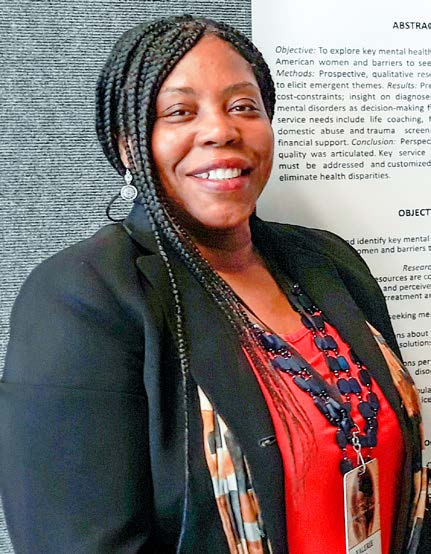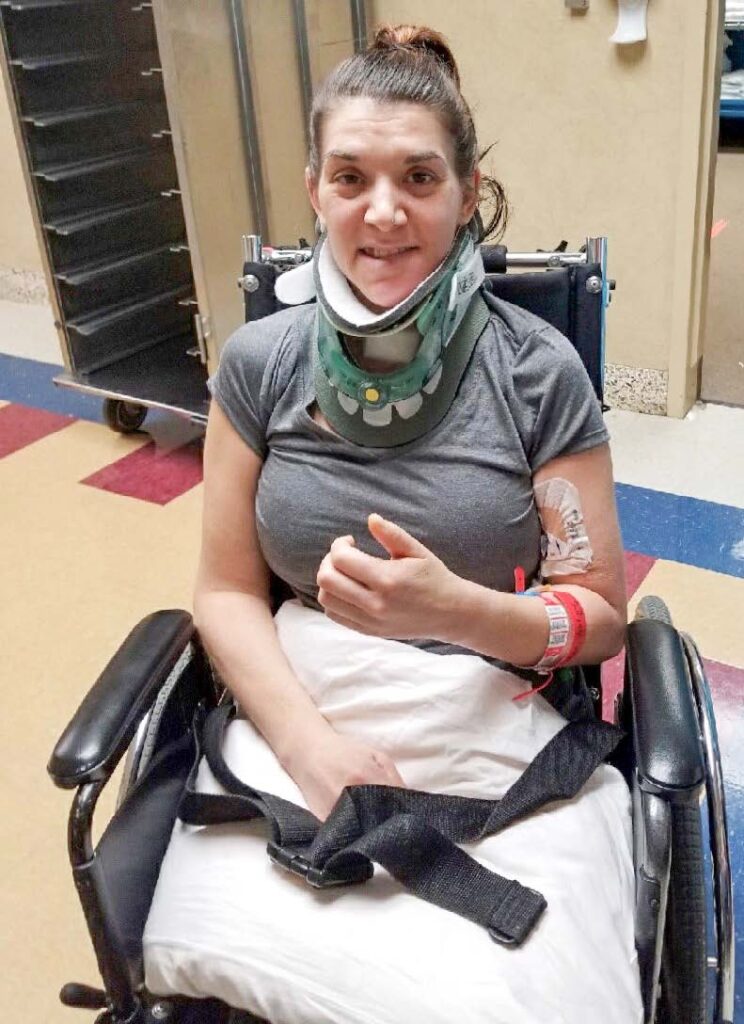Ask the Specialist: Medication Reminders for Traumatic Brain Injury
By: Dr Valerie U Oji, RPh, PharmD, BCPP

There are many medications used to manage conditions after a traumatic brain injury (TBI). Whether prescribed or over-the-counter, it is important to read the labels and have a good understanding of your medications, herbals, and supplements to make the best of them and minimize unwanted side effects or unnecessary risks.
One of the most common and potentially dangerous side effects is drowsiness. Drowsiness from medicines can be especially problematic after a TBI because they:
- Can make it challenging to do tasks that require concentration, like driving.
- Can increase the risk of falls and injury. TBI survivors are especially prone to re-injury.
- Can affect concentration and performance at work.
Examples of medications (meds) that may cause drowsiness are antidepressants and mood stabilizers, seizure prevention meds, meds for high blood pressure, sleep and anxiety meds (especially the “Benzo” class), and muscle-relaxants.
Some over-the-counter products (OTC) can also cause sleepiness, such as allergy medications, sleep aids, and medicines for nausea or vomiting. Sometimes the sleepiness can fade with time, but at first try to avoid activities that require alertness and observe how much drowsiness one experiences with each medicine.
You might need to change the time of day that you take something that makes you tired, or have a dose adjusted to make things tolerable. Discuss this with your physician and pharmacist.
It helps to avoid alcohol and mixing OTC products that can add to the drowsiness. It’s also good to develop good habits around bedtime, such as avoiding caffeine and turning off lights, television, and tech gadgets to get enough rest at night.
Some of the same medications that cause drowsiness can also affect cognition, concentration, and memory. In addition, TBI patients sometimes have difficulty remembering if they already took their medication doses, or may take too many on impulse or for symptom relief. In this case, it is best to enlist the help of caregivers and supportive family members to keep track of medications.
There are also special pillboxes and phone apps that can give reminders on when and how to take medications.
For more info on medications, a good resource is the College of Psychiatric and Neurologic Pharmacists (CPNP) website at www.cpnp.org.
Want to suggest a topic? Email us at braininjury@uams.edu.
Stories from the TBI Community: Crystal Payne
As Told to Kimberly Lamb
I looked at my children and knew I had to get better.
Crystal Payne

On March 17, 2017, Crystal was seriously injured when the ATV side-by-side in which she was riding flipped and landed on her. Her rural location made it difficult for emergency services to find her. With extreme care, her husband, Danny, and several friends loaded Crystal, who was unconscious at the time, into the back of a pickup truck and drove to the parking lot of a local church where an ambulance met them. The ambulance then drove to a golf course where a Baptist Med Flight transported Crystal to the hospital.
At the hospital, Crystal was placed in a medically-induced coma. After a month, she woke up in ICU on a ventilator. As she became more aware, her father explained that she had been in an accident and assured her that the children were fine.
Crystal had sustained several injuries including a broken neck (c5, 6, 7, and t1), bruised spinal cord, broken chest bone, ribs, and jaw, blood clot in arm, stint in main artery of arm, shattered shoulder blade, and a traumatic brain injury.
After two months in the hospital, Crystal began to receive rehabilitative services at the Baptist Health Rehabilitation Institute (BHRI). For a month, she worked with speech and occupational therapists.
It was during this time that the extent of damage to her arm was recognized, and she began receiving treatment for a brachial plexus injury. Healthcare professionals told Crystal that she only had a one percent chance of ever using her right arm again.
Even with so much to overcome, Crystal was determined to be home in time for her daughter’s pre-school graduation. In May, she achieved her goal.
However, once she returned home, she began to realize how much she could not do for herself. She said, “I looked at my children and knew I had to get better. I did not want them to see me fail. I wanted to teach them that if they worked hard at anything in life, they could achieve it. I wanted them to be proud of me and believe that if mom could do it, they could do it, too.”
For ten months, Crystal saw her physical therapist, Amy Cadmus, for help with the injuries to her right hand, arm, and shoulder. Although the therapy was painful in the beginning, Crystal was determined to improve and get back to her family and career as a hairdresser. Amy was determined to help her get there.
To help Crystal reach her goal of returning to work, Amy turned to her woodworking hobby. She built a special step stool that allowed Crystal to have better access to her salon clients. Today, you can find Crystal doing what she loves at her salon in Lonoke, Hair By Crystal.
Crystal cannot share her story without mentioning the remarkable support that she received from her community. Friends and family organized a BBQ fundraiser and silent auction to raise money for the Payne family. Thanks to the support of her community, Crystal faced less financial stress on her path to healing.
In November 2019, Eddie Williams, a nurse educator with the Trauma
Rehabilitation Resources Program, contacted Crystal to invite her to attend the Brain Injury Regional Workshop that was being held in Jacksonville. In a hurry to get her day going, Crystal almost didn’t answer her phone. After speaking with Eddie for a couple of minutes, she quickly realized that she had been waiting to receive this call.
Eddie Williams said, “As Crystal began recounting the details of her injury, recovery, and motivation for working as hard as she could, I knew that I had to share it with a team member. We put Crystal on a speaker phone and sat in amazement as we listened to her story. We knew we had to meet her face-to-face, so we set up a lunch meeting, and things moved forward from there.”
Crystal, now managing her health and living her best life, was ready to begin sharing her story and helping others. Instead of being a participant at the workshop, she became the keynote speaker. Workshop organizers were
able to connect her with flight paramedic, Joe Reynolds, who helped save her life. Since speaking at the Brain Injury Regional Workshop in Jacksonville, Crystal has continued to share her story.

Crystal and Joe Reynolds spoke to healthcare professionals at BHRI about her brachial plexus injury. During the presentation, she met Lee Ann Reynolds, another flight paramedic on her transfer flight.
Crystal has also shared her story at the quarterly meeting of the TBI Advisory Board Workgroup and accepted an invitation to join the group. The TBI Advisory Board Workgroup is working to build a stronger infrastructure and support system for the state’s TBI population.
Even though Crystal has had to adjust to a new normal in some ways, her hard work during the recovery process has resulted in a positive outcome. Not only did she meet her goal of setting an example for her children, she has become an advocate and a voice for the needs of those recovering from traumatic injuries.
Crystal is an inspiration to us all.

Crystal’s Tips for Survivors:
- Never give up on yourself. Take it one day at a time, and remember that baby steps are actually big steps.
- Never give up hope and faith. Pray every day.
- Push yourself. Your body can handle it. It may be hard and painful, but you will get results.
Want to share your story? Email us at braininjury@uams.edu.
Please be aware that past newsletter issues may contain outdated information. For the latest updates on resources and events, visit our website or contact us at braininjury@uams.edu with any questions.
